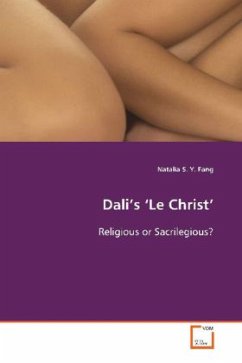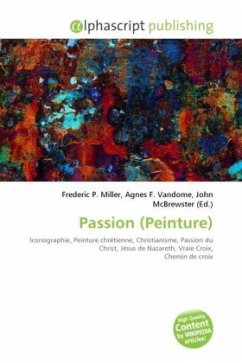Salvador Dalí s much loved painting Le Christ (1951)
seems to portray the crucified Christ looking down
protectively on the Sea of Galilee, where there are
an ancient nobleman, a fisherman and his boat, and a
modern-suited man. Yet Le Christ has attracted
academic suspicion of its intentions, as also
physical assaults from members of the public. Dalí s
conversion to Catholicism in 1941 it fitted with his
breaking with conventional Surrealism and his siding
with Franco in Spain s civil war. Yet Le Christ
gives rise to doubts as to its straightforward
religiosity. Dalí s Christ is not conspicuously
suffering: there are no nails, no blood, no sweat
and no crown of thorns, but many reminders of Dalí s
beloved home of Port Lligat and of his sex-mad wife,
Gala, who had escaped from Russian Communism.
Christ s face is obscured and there is no title on
the Cross indicating who is being crucified
instead just a piece of paper lifted from a painting
by Dalí s hero, Velazquez. So Dali probably saw and
painted himself as the Christ-like figure on his
Cross. Dalí believed he was born to save the world
from modern non-realist art -- though not by the
route of martyrdom.
seems to portray the crucified Christ looking down
protectively on the Sea of Galilee, where there are
an ancient nobleman, a fisherman and his boat, and a
modern-suited man. Yet Le Christ has attracted
academic suspicion of its intentions, as also
physical assaults from members of the public. Dalí s
conversion to Catholicism in 1941 it fitted with his
breaking with conventional Surrealism and his siding
with Franco in Spain s civil war. Yet Le Christ
gives rise to doubts as to its straightforward
religiosity. Dalí s Christ is not conspicuously
suffering: there are no nails, no blood, no sweat
and no crown of thorns, but many reminders of Dalí s
beloved home of Port Lligat and of his sex-mad wife,
Gala, who had escaped from Russian Communism.
Christ s face is obscured and there is no title on
the Cross indicating who is being crucified
instead just a piece of paper lifted from a painting
by Dalí s hero, Velazquez. So Dali probably saw and
painted himself as the Christ-like figure on his
Cross. Dalí believed he was born to save the world
from modern non-realist art -- though not by the
route of martyrdom.








